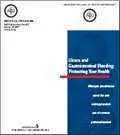
Celiac.com 01/14/2011 - Researchers recently presented information at the American College of Gastroenterology that indicates that more people with celiac disease might stop responding to gluten-free diets. Their new study, in the form of a retrospective chart review, turned up 17 cases of refractory celiac disease, each of which was eventually treated successfully with thiopurines.
Researchers Christopher Hammerle, MD, and Sheila Crowe, MD, of the University of Virginia in Charlottesville, reported the results at a meeting at the American College of Gastroenterology. Hammerle called thiopurines her "treatment-of-choice for refractory celiac disease to avoid long-term steroids." The researchers stated that refractory disease appear to be on the rise. Patients with refractory celiac disease have recurrent symptoms such as abdominal pain, severe malabsorption, and intestinal damage.
Celiac.com Sponsor (A12):
While some people note that refractory sprue might be caused by non-compliance to the gluten-free diet, current guidelines for treating refractory sprue call for doctors to review the dietary compliance of their patients, and to press for stricter adherence, and to search for other triggers of non-responsiveness only once dietary adherence issues are ruled out. In order to best understand the natural history of the celiac disease and to establish best practices for treatment, the researchers examined non-responsive celiac patients who had been seen at the University of Virginia Medical Center over the previous 10-year period.
They found 17 such patients; 16 of whom had intraepithelial lymphocytes, four with the polyclonal phenotype and 12 with the monoclonal phenotype. One patient was untyped, while five patients also suffered autoimmune disease. The average age for diagnosis of a polyclonal phenotype was 45 years, and for the monoclonal phenotype mean age at diagnosis was 59. Overall, patients received a diagnosis of refractive disease an average of 4.7 years after receiving their diagnosis of celiac disease.
According to the data, diagnosis for refractive celiac disease seems to be happening more recently, with all but one diagnosis happening in the last five years, and 41% diagnosed within six months of the researchers report. Every patient diagnosed with refractive celiac disease showed evidence of malabsorption, while 71% suffered from iron deficiency Anemia, 59% suffered hypo-albuminuria, 47% had osteoporosis and 24% showed elevated liver enzymes.
According to Dr. Hammerle, steroids are the most common treatment choice for truly refractive disease. Indeed, more than four out of five refractory celiac patients (82%) first received corticosteroid treatment, but two patients went on to become steroid-dependent. Instead, Hammerle prefers to treat refractory celiac disease patients with a thiopurine. Of 14 of patients who received a thiopurine, all but one showed a notable improvement in symptoms.
Hammerle notes that, while diagnosis for refractory disease seems to be rising, celiac disease itself is still widely underdiagnosed. Brandt concurs, noting that people with undiagnosed celiac disease, or even persistent celiac disease, can develop serious complications, including lymphoma. In people with celiac disease, this can result from increased production of cytokines, including IL-15, Hammerle said, which promote the creation of T-cells that can turn malignant.
Source:
-
Open Original Shared Link. Hammerle C, Crowe S "Natural history and treatment of refractory celiac disease: Experience with 17 patients at a single center" ACG 2010; Abstract 235.




Recommended Comments